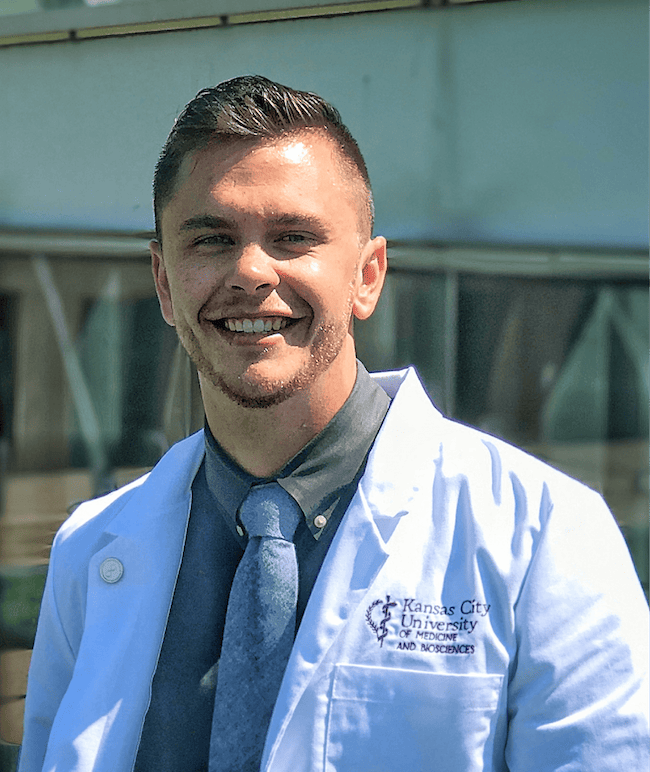COVID-19: Will the Real Healthcare Workers Please Stand Up
Now is a time of great uncertainty in medical education, but healthcare workers at all levels are in the fight together. Below, a third-year medical student shares his perspective and draws historical parallels.

Human life is fragile, but humanity is resilient.
In 1920, the world was recovering from two world wars. One was fought with guns and ammunition, the other with blankets and social distancing. Both of them required new tactics and innovations, as well as abundant sacrifice. Both of them forced organizations to mature their ranks quickly and thrust ill-trained and ill-equipped warriors into deadly environments. Both of them shaped the world we live in now, but not all lessons have been learned.
Toward the end of WWI, hospitals around the globe were at capacity, treating about 20 million wounded casualties of war and grieving another 20 million dead. They were in desperate need of rest and hope, and a cease-fire in most cases would have provided it. They would find none, however, as the now-infamous influenza pandemic seized the opportunity presented by a fractured society and fragile infrastructure to cement this time period as one of the worst in human history. It tore through every country with ferocity and without bias. Standardized training of medical professionals, namely doctors and nurses, was in its infancy, and the healthcare system as a whole could only do its best with the morbidity and mortality it faced as a result of these two wars. To meet the challenge of these tragedies, urban and rural communities alike had to rely on medical trainees early in their apprenticeships. Nursing and medical students were thrust into duty to provide medication, hand out supplies, and in some cases perform procedures for which they were underprepared. But, everyone did their part and the world graduated from this horror with scars to bear.
Fast-forward 100 years. “Non-essential personnel should stay home until further notice.” Man, do I feel helpless. Most medical schools, including my own, have suspended in-person instruction for all of their students and moved to an online curriculum. For didactic learning found mostly in the first two years, this is entirely doable. But for clinical rotations, the contingency plan is not so clear. As hospitals around the United States run out of personal protective equipment (PPE), non-essential personnel are requested to stay home. While I know I can help the healthcare team in fighting COVID-19, I understand that without the necessary equipment I carry the risk of hurting my colleagues and patients more than helping them.
According to some reports, up to 10% of Italy’s currently infected population is in the healthcare field. This is concerning, because when healthcare professionals become sick, it acts as a force multiplier in the ability for the virus to spread and cause harm. Not only can they unknowingly pass the virus to their other patients, but when physicians have to stay home due to the illness, they are likely to be replaced by people less prepared, experienced, or qualified. So, until PPE is adequately manufactured, the only thing I can do right now is to stay out of the way.
Thus, I have time to write this blog post. Our curriculum is solely online in the form of tasks many of us complete in our own studies anyway: board-style questions and skills lecture videos. A few schools have coordinated triaging roles or constructed public health courses for their students. Some students are focusing on spending time with their families as much as possible, some are spending time on themselves for the first time in years, and a heroic group of students is offering their service to those physicians and nurses working so tirelessly to keep us safe by babysitting, doing grocery runs, and taking care of house duties.
Ultimately, how this pandemic will affect our medical education in aggregate is not clear. Every decision we make is with the goal of matching into a residency program, and the recent match for the class of 2020 provides a stark reminder of the rewards for doing so. However, many of us feel like our professional goals are in flux. In addition to our third-year clinical curriculum being suspended, many programs have restricted their visiting rotation opportunities through May or June. If this continues through August, it will affect our ability to impress on sub-internships and get letters of recommendation before applying in September through ERAS, and then subsequently go on interviews Our shelf and board exams are also in jeopardy. I hope the AAMC and ACGME will delay the application timeline to accommodate these unprecedented circumstances, but for now, we wait.
Italy has announced that almost 10,000 near-graduates of medical school will forgo final exams and be asked to help fight the coronavirus in its hospitals. Perhaps the situation will continue to escalate as in 1919, and we will be called into action similarly here in the United States. I, of course, went to medical school to fight battles like these, and the adventurist/idealist in me welcomes the challenge. But after some quick reflection, the unselfish pragmatist in me hopes we do not get to that point, by heeding the advice of our tired healthcare workers, flattening the curve, and limiting the burden on our strained system. I may graduate next year as a lesser doctor than I otherwise would have, but that concern can wait. The health of my future colleagues and patients is at stake.
Michael Kortz is a third-year DO/MBA student at Kansas City University College of Osteopathic Medicine and Rockhurst University Helzberg School of Management. He will graduate from medical school in 2021. His research and professional interests include deep brain stimulation and functional neuroscience, pediatric epilepsy, neuro-oncology, health policy, medical education, and systems management. Michael is originally from Denver, Colorado, and enjoys hiking, fitness, writing, and music.
